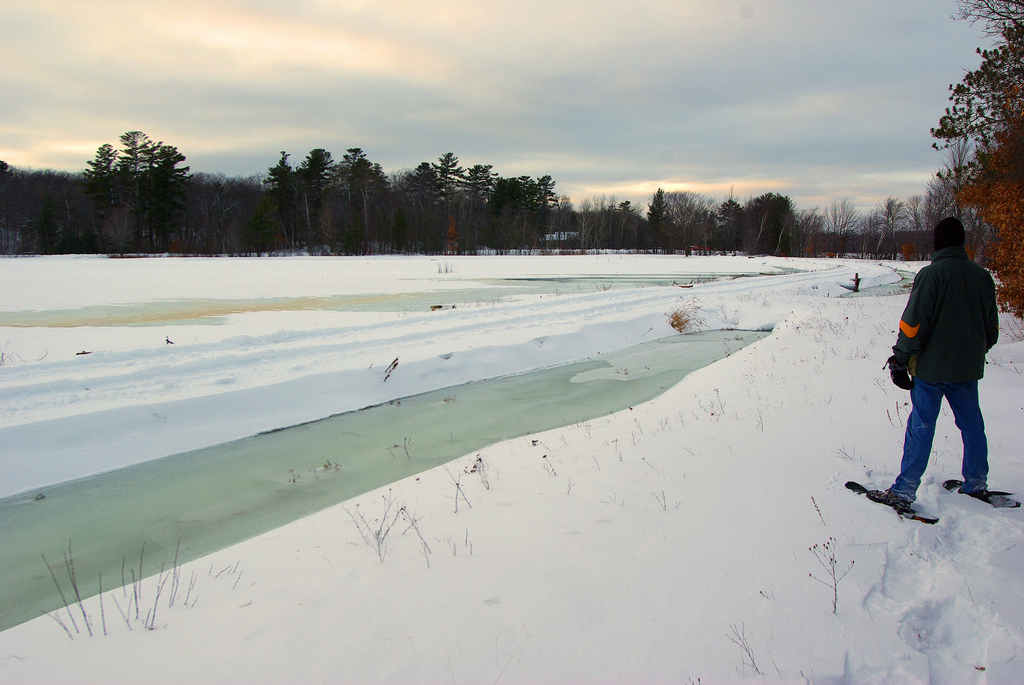Vaccinium macrocarpon has some very interesting adaptations. One of these interesting adaptations is the ability to avoid anoxia. Anoxia means oxygen deprivation. Bogs often flood with  water and cover much of the vegetation, including the cranberry. For most plants this is extremely harmful. But, for the cranberry it is a regular occurrence to be saturated in water. The cranberry can last up to six months in anoxic conditions. This is pretty intense. On commercial farms, farmers flood the cranberry fields during the winter to protect the plants from frost. These plants can survive all winter
under the ice. Though this is an amazing adaption, little is known about how the cranberry survives extreme anoxia.
water and cover much of the vegetation, including the cranberry. For most plants this is extremely harmful. But, for the cranberry it is a regular occurrence to be saturated in water. The cranberry can last up to six months in anoxic conditions. This is pretty intense. On commercial farms, farmers flood the cranberry fields during the winter to protect the plants from frost. These plants can survive all winter
under the ice. Though this is an amazing adaption, little is known about how the cranberry survives extreme anoxia.
Cranberries are perennials. They have adapted to the changes in season, and have the ability to go dormant during the winter, but not die.
The cranberry also has reproductive stems. What does this mean? Well, this means that one stem of a cranberry plant can produce a new plant. In commercial farming, farmers mow old fields and collect the stems, or cuttings. They load these cuttings into a spreader, and spread them across a new field. A mechanical plant follows behind and pushes the cuttings into the ground. A new bed of cranberries will then be ready for harvesting in about four to five years.
To learn about the lifecycle of the cranberry, click here.
Copyright Britney Mullenbach – Last updated 4/16/2011
